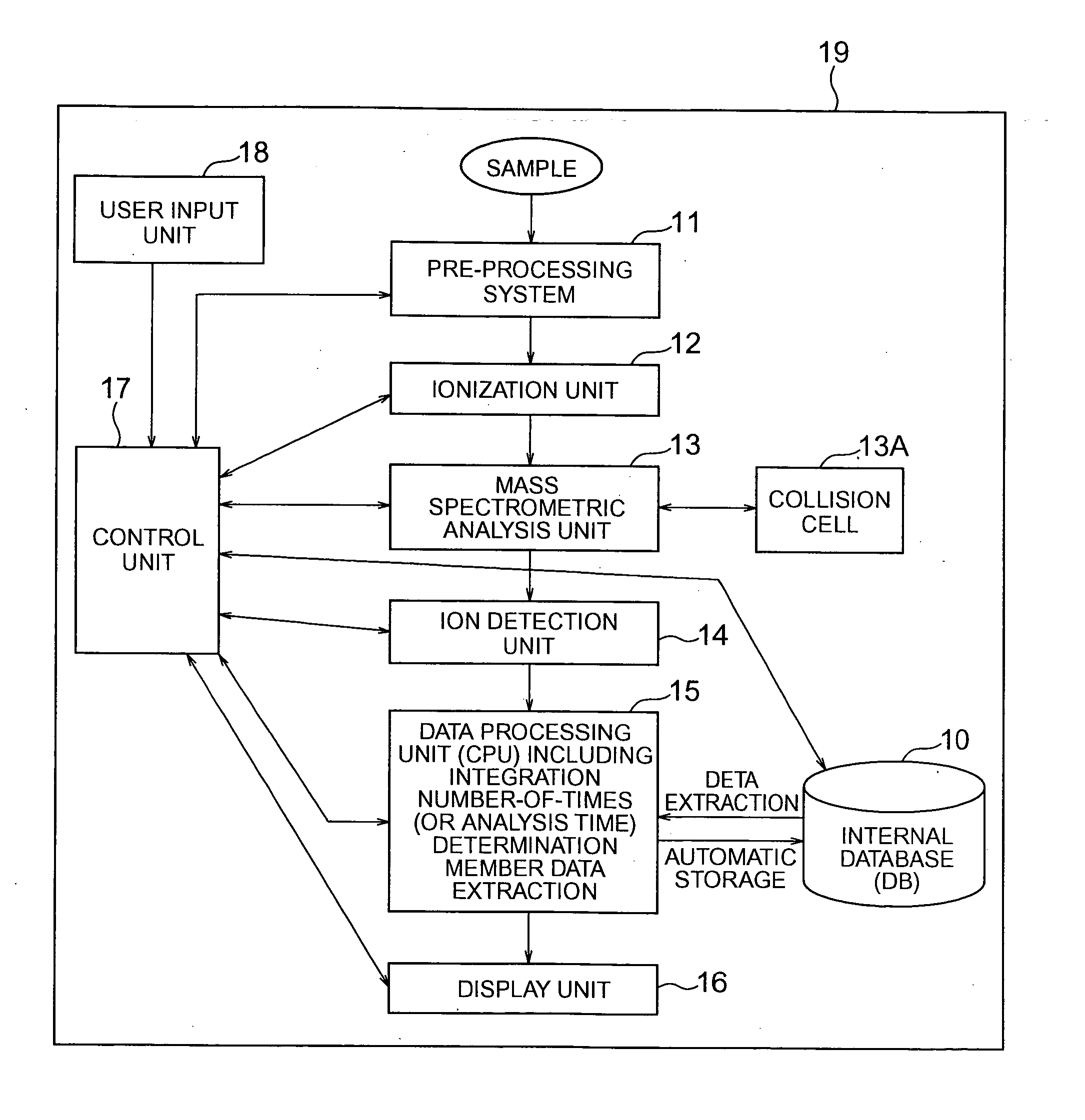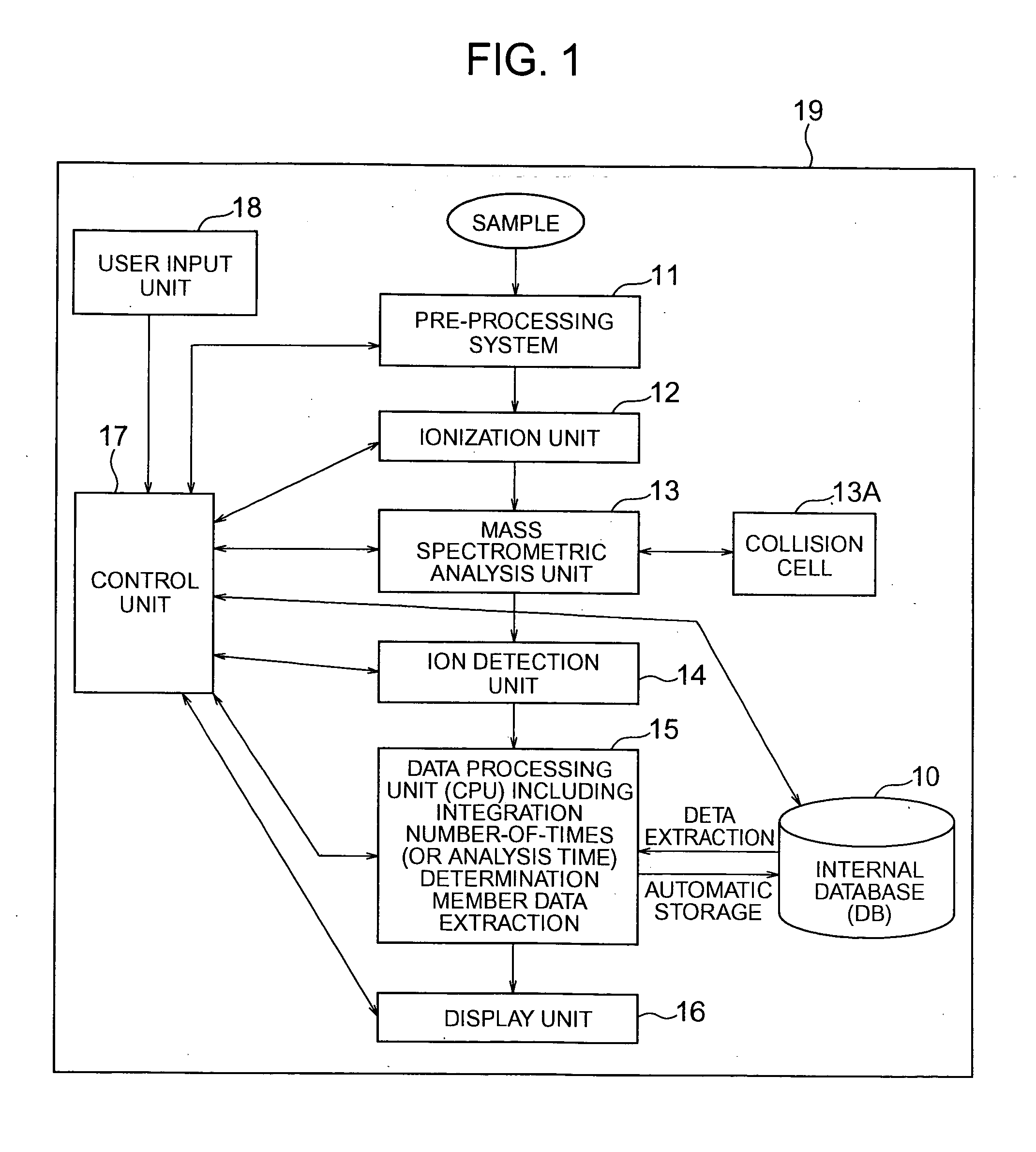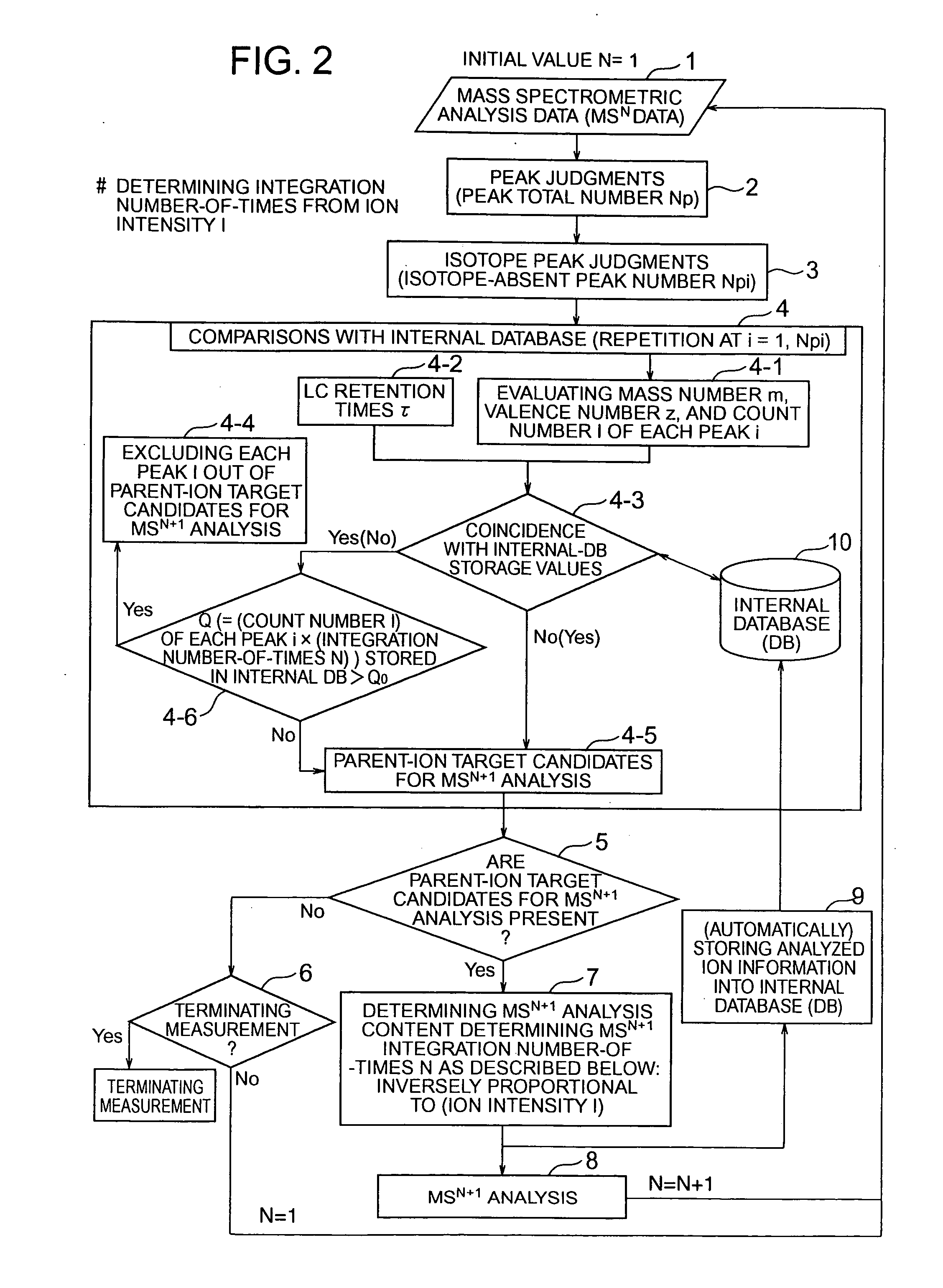Mass spectrometric analysis method and system using the method
- Summary
- Abstract
- Description
- Claims
- Application Information
AI Technical Summary
Benefits of technology
Problems solved by technology
Method used
Image
Examples
first embodiment
[0045] Hereinafter, referring to the drawings, the explanation will be given below concerning embodiments of the present invention. First, the explanation will be given below regarding a
[0046]FIG. 1 is a function block diagram for illustrating configuration of the mass spectrometric analysis system according to the first embodiment of the present invention. In a mass spectroscope 19, an analysis-target sample is pre-processed in a pre-processing system 11 such as a liquid chromatography. For example, if the original sample is a protein, the original sample is decomposed in the pre-processing system 11 into the size of a polypeptide by a digestion enzyme, then being separated and segmented by a gas chromatography (GC) or the liquid chromatography (LC). Hereinafter, an example will be given where the LC is employed as the separation / segmentation system in the pre-processing system 11.
[0047] After the separation / segmentation of the sample has been finished, the sample is ionized in an...
second embodiment
[0078] Next, referring to FIG. 7, FIG. 8, and FIG. 9, the explanation will be given below concerning the present invention. Here, the integration number-of-times or analysis time (or ion accumulation time) in the next MSn+1 (n≧1) analysis is determined in response to not only the intensity of a parent ion, but also an estimated structure of the parent ion.
[0079] In a method for making the judgment on control content for the analysis next to MSn, when n denotes the second-stage mass spectrometric analysis, i.e., in the case of MS2, the structure of the parent ion (e.g., sequence of amino acids in the case of a protein, or carbohydrate-chain structure in the case of a carbohydrate chain) is immediately estimated from the dissociation data on MS2. As a result, the integration number-of-times or analysis time (or ion accumulation time) in MSn+1 (n≧1) analysis is determined so that the integration number-of-times or analysis time (or ion accumulation time) becomes inversely proportional ...
third embodiment
[0089] Next, the explanation will be given below concerning the present invention. FIG. 10 illustrates a processing flowchart diagram in the present embodiment. Here, when the integration number-of-times or analysis time (or ion accumulation time) in the analysis next to MSn is determined in response to the intensity of a parent ion, the same LC-MS analysis is employed as the target.
[0090] In the LC-MS analysis, in some cases, there exists the following case: Namely, the tandem mass spectrometric analysis had been carried out before with respect to the same measurement target. Furthermore, from its MSn data, it is found that the ion intensity or ion count number of a parent-ion type measured this time has exceeded the ion intensity or ion count number of the same parent-ion type measured before. In this case, the integration number-of-times or analysis time (or ion accumulation time) in the analysis next to MSn is increased than in the last-time analysis. Similarly, if the ion inten...
PUM
 Login to View More
Login to View More Abstract
Description
Claims
Application Information
 Login to View More
Login to View More - R&D
- Intellectual Property
- Life Sciences
- Materials
- Tech Scout
- Unparalleled Data Quality
- Higher Quality Content
- 60% Fewer Hallucinations
Browse by: Latest US Patents, China's latest patents, Technical Efficacy Thesaurus, Application Domain, Technology Topic, Popular Technical Reports.
© 2025 PatSnap. All rights reserved.Legal|Privacy policy|Modern Slavery Act Transparency Statement|Sitemap|About US| Contact US: help@patsnap.com



